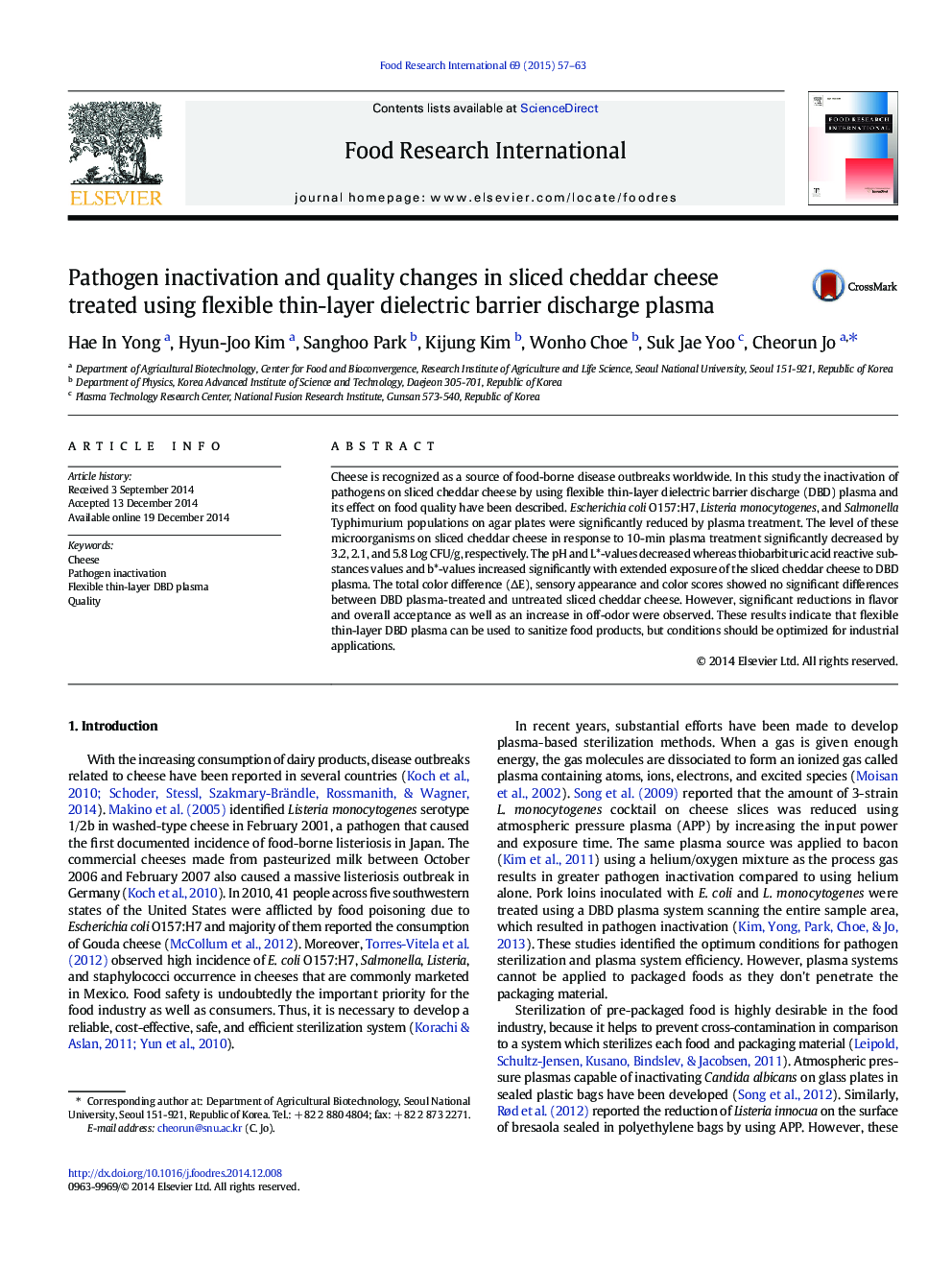| Article ID | Journal | Published Year | Pages | File Type |
|---|---|---|---|---|
| 6395545 | Food Research International | 2015 | 7 Pages |
â¢A flexible thin-layer dielectric barrier discharge (DBD) plasma system was developed.â¢Plasma treatment significantly reduced the number of pathogens on agar plates.â¢Pathogens on cheese showed 2.05-5.75 decimal reductions for 10 min treatment.â¢Flavor and taste scores were lower in 5- and 10-min treated samples, respectively.
Cheese is recognized as a source of food-borne disease outbreaks worldwide. In this study the inactivation of pathogens on sliced cheddar cheese by using flexible thin-layer dielectric barrier discharge (DBD) plasma and its effect on food quality have been described. Escherichia coli O157:H7, Listeria monocytogenes, and Salmonella Typhimurium populations on agar plates were significantly reduced by plasma treatment. The level of these microorganisms on sliced cheddar cheese in response to 10-min plasma treatment significantly decreased by 3.2, 2.1, and 5.8 Log CFU/g, respectively. The pH and L*-values decreased whereas thiobarbituric acid reactive substances values and b*-values increased significantly with extended exposure of the sliced cheddar cheese to DBD plasma. The total color difference (âE), sensory appearance and color scores showed no significant differences between DBD plasma-treated and untreated sliced cheddar cheese. However, significant reductions in flavor and overall acceptance as well as an increase in off-odor were observed. These results indicate that flexible thin-layer DBD plasma can be used to sanitize food products, but conditions should be optimized for industrial applications.
